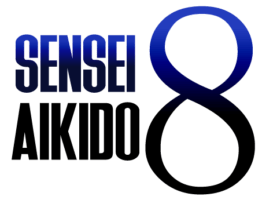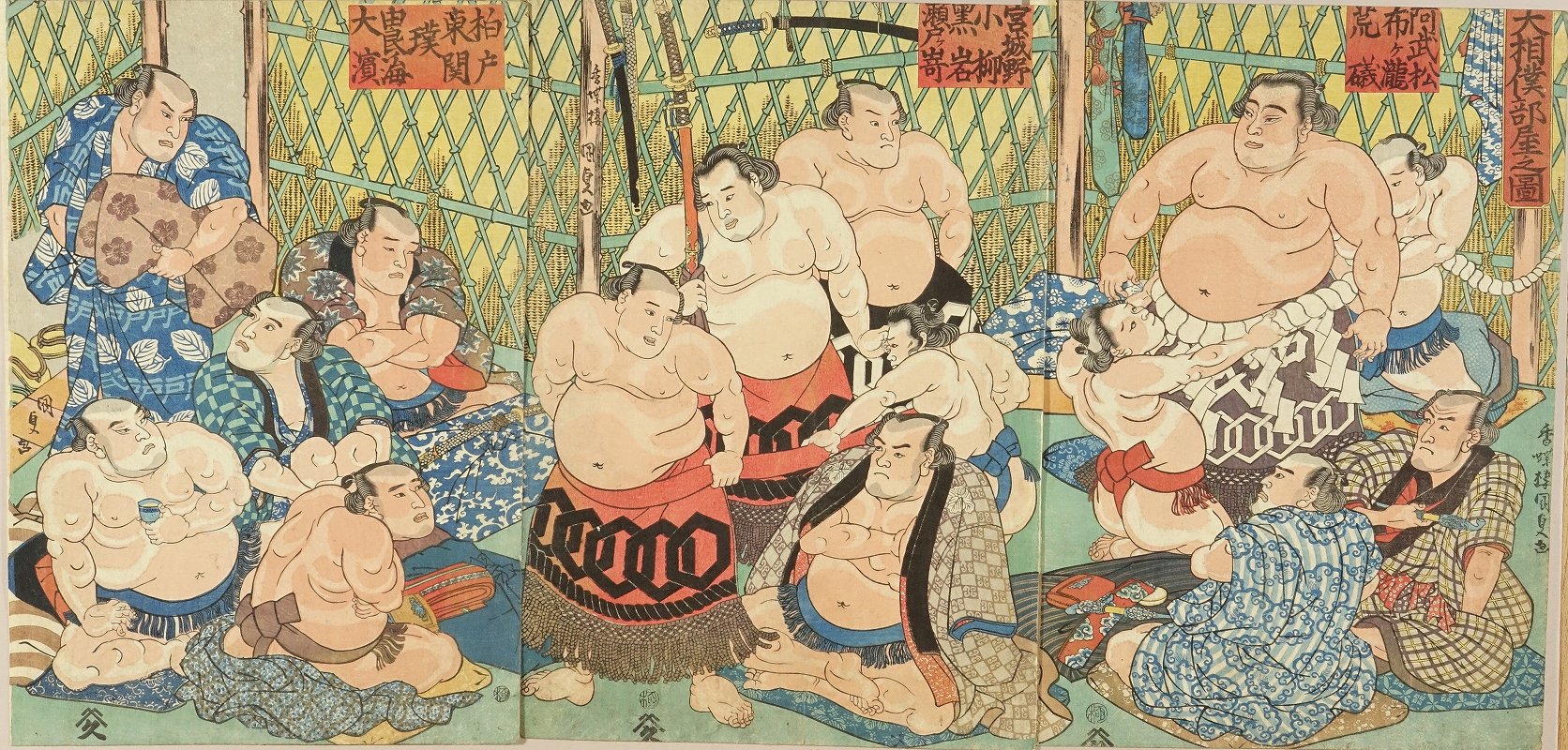Sumo has deep roots from the Shinto religion of Japan, has about 1500 years of history and is still practiced professionally only in Japan. Sumo today is considered as a Gendai Budo which literally means a modern Budo.
Professional sumo is organized by the Japan Sumo Association (JSA in the future). The members of the association, called oyakata, are all former wrestlers and are the only people entitled to train new wrestlers. Oyakata is the one to run a heya and heya is a place and part of a club where Sumo wrestlers train and live. All wrestlers in a professional Sumo must belong to one. They join heya and stays in until the end of his career. There are no transfers in Sumo.
Life of a Rikishi
Rikishi (wrestlers) was not always fat. There are no weight categories in a professional Sumo and becoming bigger gives an advantage over the others. This is one of the reasons why rikishi has a very regulated life.
The Sumo Association prescribes the behavior of its wrestlers in some details. Breaking the rules may result in fines and/or suspension for both the offending wrestler and his oyakata.
A typical sumo wrestler eats a daily diet of 20,000 calories, which is pretty astounding when you consider that the recommended daily intake for a healthy, active male is 2,500. Wrestlers day starts at 5 A.M. with the training. Skipping breakfast and working out instead slows down the wrestler’s metabolism.
At 11 o’clock rikishi take their portion of 10000 calories. The main dish is called Chanko Nabe. This is a stew filled with fish, vegetables, meat and tofu.
To complement their mighty meal, sumo wrestlers eat around 5–10 bowls of rice and copious amounts of beer, required for empty calories. After the morning meal goes a 4 hours sleep which slows down their metabolism again and makes those bodies grow. 10000 more calories are for finishing up the day before sleep.
Also, Sumo wrestlers are supposed to grow their hair to form a topknot, or Chonmage, similar to the samurai hairstyles of the Edo Period. This is done by a special stylist who spends around 15 minutes on each rikishi during the tournaments.
Sumo wrestlers are not even allowed to choose the cloth they wear. The type and quality of the dress depend on the wrestler’s rank. The lowest rank is allowed to wear only a thin cotton robe name Yukata and the wooden sandals, Geta. Higher ranks are allowed to wear a better quality silk robe of their choice and straw sandals, Zori. Anywhere they go, even in winter.
Sumo Rankings
There are six divisions starting from the lowest: Jonokuchi, Jonidan, Sandanme, Makushita, Juryo and Makuuchi as the one to bring the most of the interest to a sport. Makuuchi has the most complex hierarchy. Most of the wrestlers in Makuuchi are Maegashira. Next are Komusubi, Sekiwake and Ozeki. On the top of the system are the Grand Champions named Yokozuna.
Duties in the Heya vary on the rank of the wrestler. Lowest ranks wake up earlier and cook, clean, serve for the highest ranks. They even wash their bodies and eat last.
Since 1960 a number of the high-ranked wrestlers has increased among the foreigners. For example, Kisenosato was the first Japanese born Yokozuna in the last 20 years. Mongolians are dominating mostly but there are few of the others from Georgia, Bulgaria, USA, etc. This issue made JSA create a rule of one Gaijin per stable. Foreigner has to speak a language well and fit a Japanese culture.
Let’s look at some of the common sumo techniques below:
Dohyo
Dohyo is a wrestling ring. Sizes are 5.5m x 5.5m and 0.6m high with the circle of 4.55m in diameter and 16.26 m2 in area. Dohyo is built by the Yobidashi for every event and it takes one week to build it. Dohyo is made from a mix of clay and sand. The circle borders are from the rice bales which are buried in the clay. There are two white lines at the center, the Shikiri-Sen. Wrestlers position themselves behind those at the start of the bout. A roof resembling that of a Shinto shrine may be suspended over the Dohyo where each corner represents a season of the year.
Gyoji and the Judges
Gyoji is a referee. They are attired in Kimono patterned with the style worn by the Samurai of the Kamakura Period, some 600 years ago. Gyoji enters in a Sumo world as a teenager and stays in until the retirement. They also have ranks and one can distinguish they ranks by their look. All of them are wearing a Shinto-traditional hat and have a solid fan named Gunbai which they use to signal victory. The difference is in the kimono quality and footwear. The lowest ranks are barefoot. Those to refer Juryo matches wear Tabi. Then comes the next rank with the Zori and these are for the Komusubi, Sekiwake and Ozeki match. Tate-Gyoji or the Chief-Referees are two Gyoji wearing purple-chest decorations with a purple as a color of nobility and are there to decide Yokozuna matches. They take the names Kimura Shonosuke and Shikimori Inosuke, the higher- and lower-ranked Tate-Gyoji respectively. Tate-Gyoji also carries a dagger. It symbolizes their resolve to commit suicide if they misjudge a bout.
Judges are sitting around the four corners of the Dohyo. They are chosen from the Oyakata and wear a black formal kimono. They may overrule a Gyoji’s decision or even order a rematch. In a doubtful case, they come up on the dohyo and settle the matter.
Tournaments
Honbasho is the six Grand Sumo Tournaments that are held every year since 1958. Three of them are in a Sumo Hall, Tokyo. One in on Osaka, one in Nagoya and one in Fukuoka. Each of them lasts for 15 days starting from Sunday and ending on Sunday also. Top wrestlers have one fight every day, lower ranks may have one fight in two days. Yokozunas and top rikishi are fighting at the end of the day as the headliners of the daily event. The last day of a tournament is called a Senshuraku, which literally means “the pleasure of a thousand autumns”.
The one who has most wins through the 15 days period is considered to be a
Yusho, winner in his division, and is promoted to a next one. If some have the same count of wins then additional matches are being scheduled for those to decide a winner by the judges.
Wrestlers who are from the same training stable cannot compete against each other, nor can wrestlers who are brothers, even if they join different stables. The one exception to this rule is that training stable partners and brothers can face each other in a championship-deciding playoff match.
The Emperor’s Cup is presented to the wrestler who wins the top-division Makuuchi championship.
Salaries
Basic salaries for the top division wrestlers are:
Yokozuna: 3,000,000, about US$26,500
Ozeki: 2,500,000, about US$22,000
Sanyaku: 1,800,000, about US$16,000
Maegashira: 1,400,000 or about US$12,500
Juryo: 1,100,000, about US$9,500
In addition, Sekitori receives a bonus income for each basho based on their performance. Also, prize money is given to the winner of each divisional championship, which increases from 100,000 yen for the lowest division victory up to 10,000,000 yen for winning the top division.
Top division Rikishi below the Ozeki rank is eligible to receive a Sansho prize. Sansho may be awarded for:
- Shukun-Sho, Outstanding Performance prize
- Kanto-Sho, Fighting Spirit prize
- Gino-Sho, Technique prize
Any of the given prize is worthy of additional 2,000,000 yen (18000$).
Wrestlers lower than the second division are considered as trainees and receive only a fairly small allowance instead of a salary.
Shinto Traditions
On the day before the beginning of each tournament, the Dohyo-Matsuri, a ring-blessing ceremony, is performed by Gyoji.
Women are forbidden from entering or touching the ring. It’s considered as a violation of the purity of the ring.
Dropping salt before the bout is also known as a ring-purifying action.
At the end of every day of the tournament Yumitori-Shiki, a bow-twirling ceremony is performed by a Makuushita Rikishi to drive away any evil spirits. Back in the days of a sumo a bow was one of the prizes a tournament winner received and he performed an action by himself. These days bow is not a prize anymore but a tradition is kept.
More Sumo Facts
No car driving is allowed for the Rikishi. So are the rules from the JSA. This is why you have chances to meet them in public transport like metro.
Expressing their emotions in public is also limited by the Association, especially during wining or losing.
Sumo fans sit on thin Japanese cushions. When they’re disappointed by a ruling or outcome they throw them into the ring.
Some sumo organizations have minimum height requirements for their competitors. This prompted 16-year-old Takeji Harada of Japan (who had failed six previous eligibility tests) to have four separate cosmetic surgeries over a period of 12 months to add an extra 15 cm (6 inches) of silicone to his scalp, which created a large, protruding bulge on his head. In response to this, the Japanese Sumo Association stated that they would no longer accept aspiring wrestlers who surgically enhanced their height, citing health concerns.
Majority of the Sumo fans are more than 50 years old. It’s not surprising. One has to be at least mature to be able to understand the beautiful world of this Budo.
Covering everything about Sumo in one article seems impossible. However, learning more is not a problem since there are a lot of guides, videos and Sumo-related material on the web.

